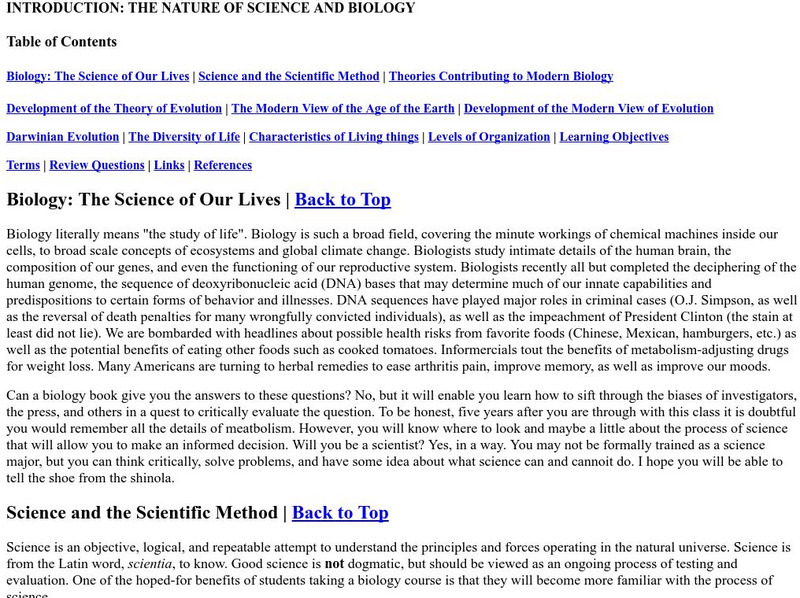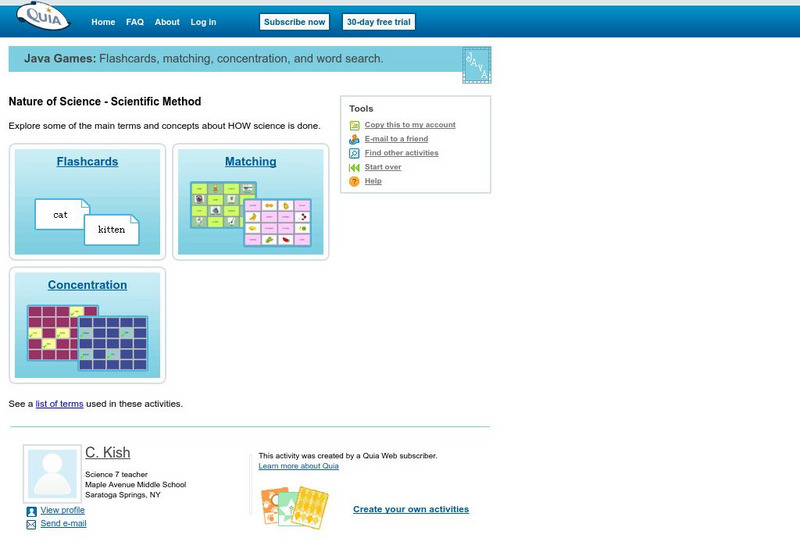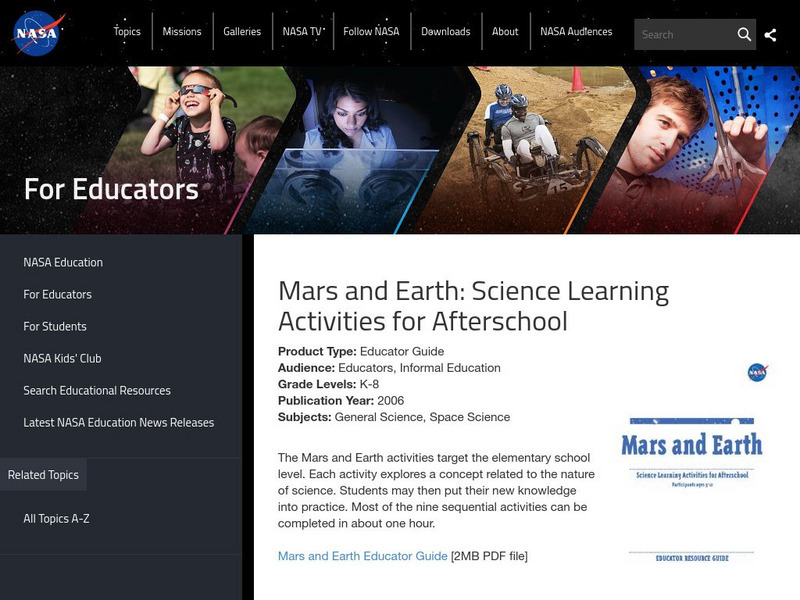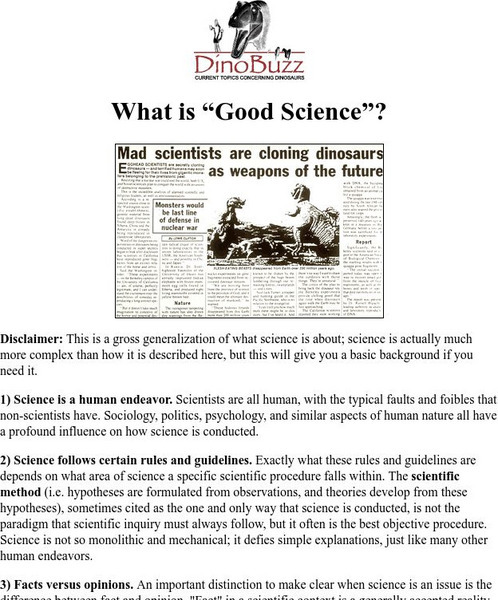Hi, what do you want to do?
CK-12 Foundation
Ck 12: Chemistry: Nature of Science
[Free Registration/Login may be required to access all resource tools.] Presents science as a group effort and covers how science information is communicated and shared.
CK-12 Foundation
Ck 12: Physical Science: Nature of Science
[Free Registration/Login may be required to access all resource tools.] Definition and goal of science and how science advances.
CK-12 Foundation
Ck 12: Chemistry: Nature of Science
[Free Registration/Login may be required to access all resource tools.] Definition and goal of science and how science advances.
Other
Geological Society of America: The Nature of Science and Scientific Method [Pdf]
An introduction to science and how scientists solve problems using the scientific method. Highlights how the scientific method has been used in the past and present.
Estrella Mountain Community College
Online Biology Book: The Nature of Science and Biology
Use the scientific reasoning and critical thinking to take an in-depth look at the basics of biology.
Science Education Resource Center at Carleton College
Serc: Cube Puzzle and Toilet Paper Roll Model in Teaching the Nature of Science
This lesson incorporates inexpensive materials such as carton boxes, toilet paper roll tube, strings and toothpicks. It engages students to conduct pattern observation, prediction, testing and ends up with a model construction. It also...
Indiana University
Indiana University: Nature of Science Lessons
This list of nature of science lessons from the Indiana University includes three links to lessons under the heading "Realm and Limits."
Quia
Quia: Nature of Science Scientific Method Flashcards
Review the nature of science with on-line flash cards.
Indiana University
Indiana University: Science vs. Non Science
This mini-lesson at the Evolution and Nature of Science Institute site from Indiana University provides a criteria by which students can evaluate an idea or explanation for scientific credibility.
Indiana University
Indiana U./ensi Sensi/better Biology Teaching
The paper "Better Biology Teaching by EmphasizingEvolution & the Nature of Science" includes Modern Science & Uncertainty as one of the four major themes the authors advocate in the teaching of biology.
Khan Academy
Khan Academy: Biology and the Scientific Method Review
Review your knowledge of the nature of science as it relates to biology.
Quia
Quia: Nature of Science
Find games and flashcards that students can use to learn the words associated with the scientific method.
Quia
Quia: Nature of Science Scientific Method Concentration
Play a game of concentration by matching terms used in the scientific method to their proper description.
Other
Denver Museum of Nature & Science
This resource is the homepage of the Denver Museum of Nature & Science. Find out everything you'd want to know for planning a visit and see what exhibitions are currently showing.
Vision Learning
Visionlearning: Culture of Science: Nature of Scientific Knowledge
Explore what science really is with this explanation of scientific knowledge.
Story Behind the Science
Story Behind the Science: Search for Life's Origins [Pdf]
Article describing research done by scientists in their quest to understand the origins of life. Questions are posed throughout about the nature of scientific research.
PBS
Pbs Learning Media: Super Scientists
Grab your science tools and explore with PBS KIDS. Through hands-on activities and exciting media that transports you to space and in the Earth, this collection will bring science to life in your classroom. These resources help students...
NASA
Nasa: Mars and Earth: Science Learning Activities for Afterschool
This set of activities teaches students about the big picture of science using Mars as an example: how to collect data, use evidence, and look at models.
University of California
Ucmp: What Is "Good Science"?
A very good explanation of the scientific process and the differences between science and non-science. This is a concise and clearly written description.
University of Hamburg
University of Hamburg: Deviations From Mendelian Laws And: What Is the Meaning of Dominance?
Upper level discussion of several of Mendel's experiments and laws.
Other
Montana State University: Strange Dead Bird
An online interactive mystery where students use their science knowledge to solve the death of some strange birds. Use the clues given to use the scientific method to figure out why the animals are getting sick.
NASA
Nasa: Mars and Earth: Science Learning Activities for Afterschool
This set of activities teaches students about the big picture of science using Mars as an example: how to collect data, use evidence, and look at models.
Palomar Community College District
Palomar College: Mendels' Genetics
This site from Palomar College provides a good background on exactly what Mendel did. Vocabulary links throughout make this a very good introduction article for genetics.
Estrella Mountain Community College
Estrella Mountian College: Introduction to Genetics
This site explains genetic beliefs before and after Mendel, and also includes a section on Mendel himself and his experiments, entitled, "The Monk and his Peas".
Other popular searches
- History and Nature of Science
- The Nature of Science
- Nature of Science Biology
- Nature of Science Inquiry
- Nature of Science Physics
- History Nature of Science
- Genetics Nature of Science
- Teaching Nature of Science
- Nature of Science Weather
- Genetic Nature of Science
- Nature of Science Experiments
- Nature of Science and Weather








![Geological Society of America: The Nature of Science and Scientific Method [Pdf] eBook Geological Society of America: The Nature of Science and Scientific Method [Pdf] eBook](http://lessonplanet.com/content/resources/thumbnails/410140/large/bwluav9tywdpy2symdiwmduymc0ynjkxni0xmxmwnxjjlmpwzw.jpg?1589985553)














